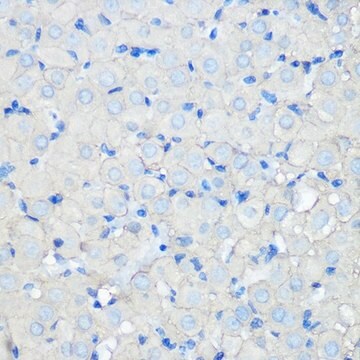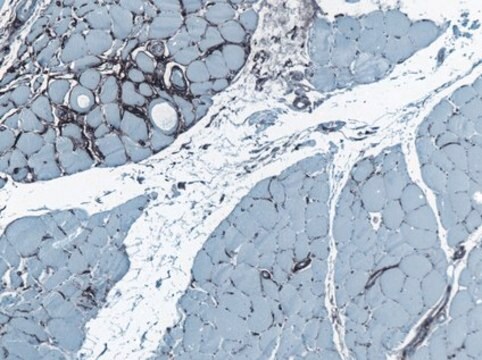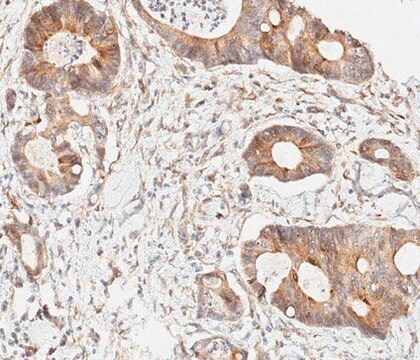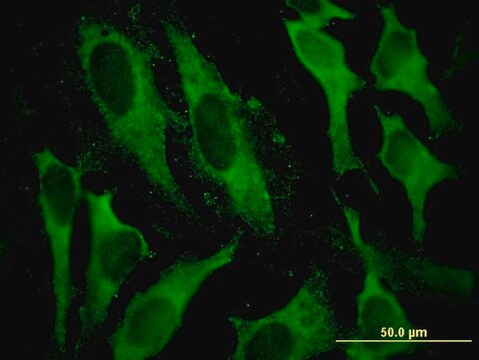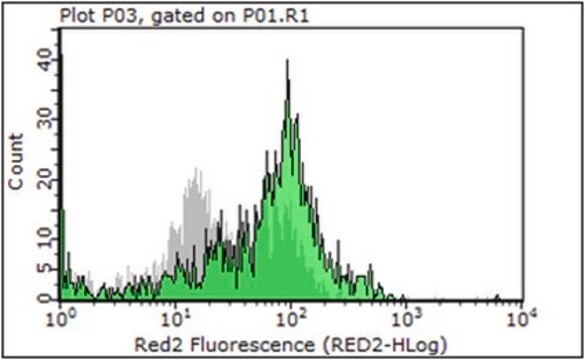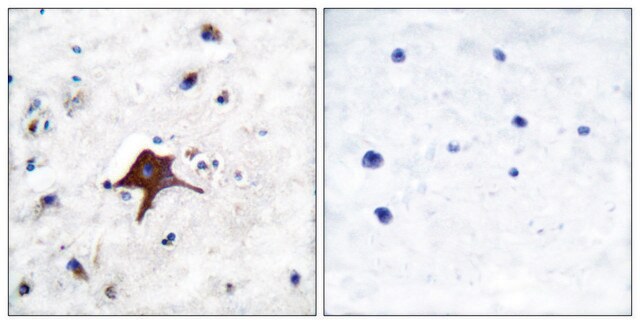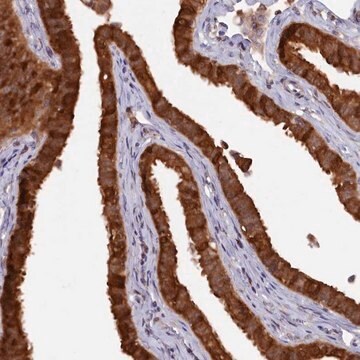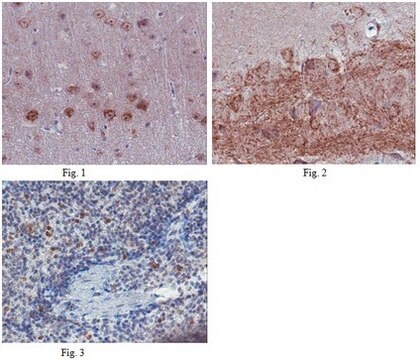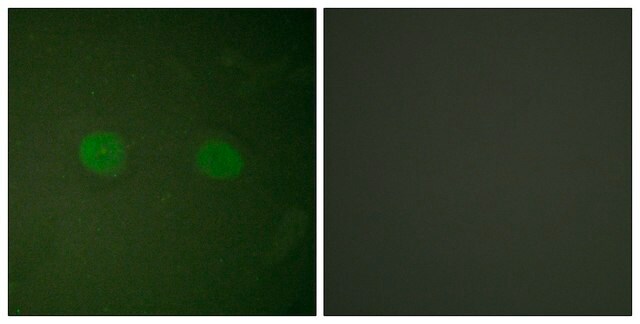MABS1283
Anti-MLN64/STARD3 Antibody, clone 2BE-2F4
ascites fluid, clone 2BE-2F4, from mouse
Synonym(s):
StAR-related lipid transfer protein 3, MLN64/STARD3, Metastatic lymph node gene 64 protein, MLN 64, Protein CAB1, START domain-containing protein 3, StARD3
About This Item
Recommended Products
biological source
mouse
Quality Level
antibody form
ascites fluid
antibody product type
primary antibodies
clone
2BE-2F4, monoclonal
species reactivity
human
technique(s)
electron microscopy: suitable
immunocytochemistry: suitable
immunohistochemistry: suitable
western blot: suitable
isotype
IgG1κ
NCBI accession no.
UniProt accession no.
shipped in
dry ice
target post-translational modification
unmodified
Gene Information
human ... STARD3(10948)
General description
Immunogen
Application
Immunocytochemistry Analysis: A representative lot detected MLN64/STARD3 in BT-474, MCF7, and transfected COS-1 cells (Lutz-Moog, C., et al. (1997). Int. J. Cancer. 71:183-191).
Immunohistochemistry Analysis: A representative lot detected MLN64/STARD3 in human breast tissue (Lutz-Moog, C., et al. (1997). Int. J. Cancer. 71:183-191).
Electron Microscopy Analysis: A representative lot detected MLN64/STARD3 in HeLa cells (Holtta-Vuori, M., et al. (2005). Molecular Biology of the Cell. 16:3873-3886).
Western Blotting Analysis: A representative lot detected MLN64/STARD3 in COS-1 cell lysate (Watari, H., et al. (1997). Proc. Natl. Acad. Sci. USA. 94:8462-8467).
Western Blotting Analysis: A representative lot detected MLN64/STARD3 in various human cell lines (Lutz-Moog, C., et al. (1997). Int. J. Cancer. 71:183-191).
Signaling
Signaling Neuroscience
Quality
Western Blotting Analysis: A 1:2,000 dilution of this antibody detected MLN64/STARD3 in 10 µg of SK-OV-3 cell lysate.
Target description
Physical form
Storage and Stability
Handling Recommendations: Upon receipt and prior to removing the cap, centrifuge the vial and gently mix the solution. Aliquot into microcentrifuge tubes and store at -20°C. Avoid repeated freeze/thaw cycles, which may damage IgG and affect product performance.
Other Notes
Disclaimer
Not finding the right product?
Try our Product Selector Tool.
Storage Class Code
12 - Non Combustible Liquids
WGK
nwg
Flash Point(F)
Not applicable
Flash Point(C)
Not applicable
Regulatory Listings
Regulatory Listings are mainly provided for chemical products. Only limited information can be provided here for non-chemical products. No entry means none of the components are listed. It is the user’s obligation to ensure the safe and legal use of the product.
JAN Code
MABS1283:
Certificates of Analysis (COA)
Search for Certificates of Analysis (COA) by entering the products Lot/Batch Number. Lot and Batch Numbers can be found on a product’s label following the words ‘Lot’ or ‘Batch’.
Already Own This Product?
Find documentation for the products that you have recently purchased in the Document Library.
Our team of scientists has experience in all areas of research including Life Science, Material Science, Chemical Synthesis, Chromatography, Analytical and many others.
Contact Technical Service